Produce for life
Throughout the history of mankind, sowing has been a key factor for the development of society expressed in food and commercial terms. This profession as old as life itself is so important in our lives that we rarely give the right value to this activity. And at this point I do not just want to refer to agricultural sowing as a factor of production. From a social point of view, an act of sowing, it is also everything in which we put our greatest effort, effort, money and time.
Before continuing to develop this topic, I would like to give you a warm greeting appreciated , the interaction with you is something super important to continue generating more and more content. I invite you to check my blog, if you want recreate yourself a bit with some articles of Venezuelan history.
This publication is made on the occasion of my most recent sowing of two foods that are part of the diet of each Venezuelan as they are yucca and quinchoncho. This work was carried out with much sacrifice and hope and whose main objective is to market part of the harvest and the other part is for family consumption.
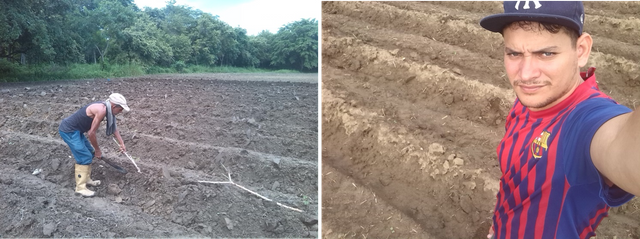
As in some parts of the world these foods have different names, here I will leave some definitions that Wikipedia does:
Cassava: Manihot esculenta, commonly called cassava (/kəˈsɑːvə/), manioc, yuca, mandioca and Brazilian arrowroot, is a woody shrub native to South America of the spurge family, Euphorbiaceae. It is extensively cultivated as an annual crop in tropical and subtropical regions for its edible starchy tuberous root, a major source of carbohydrates. Though it is often called yuca in Spanish and in the United States, it differs from yucca, an unrelated fruit-bearing shrub in the family Asparagaceae. Cassava, when dried to a powdery (or pearly) extract, is called tapioca; its fried, granular form is named garri. Source
The consumption of cassava provides the body with an important source of vitamin K, vitamin B and vitamin B-6, as well as some minerals that provide energy to those who eat it constantly.
Quinchoncho: The pigeon peas, pigeon pea, pigeon pea, bean stick, pea bean, pigeon pea or pigeon pea is a shrub legume with alternating trifoliolate leaves. It is discussed whether its origin is Africa or India, but it has been cultivated for at least 3 thousand years. In addition, it is a very healthy seed to ingest and highly recognized in Latin American countries such as Colombia, Costa Rica, Panama, Paraguay, Puerto Rico, among others source in Spanish.
In the case of this legume we can say that it has a high nutritional value, although it is true that in some people it is difficult to digest this food, it is important to highlight the high content of fiber, iron, potassium, phosphorus and some vitamins as the complex B and vitamin C to name a few. There are nutritionists who recommend the consumption of this cereal as a substitute or alternative to meat
 )
)(Select the cassava seed to be planted)
In the holy scriptures (the Bible), God mentions us and at the same time provides us with the necessary elements for sowing. That is why I am going to allow myself to extract the following biblical quotation so that they understand a little better what I speak to them:
Then God said: “Here I have given to you every seed-bearing plant that is on the entire earth and every tree with seed-bearing fruit. Let them serve as food for you. GENESIS 1:29
Making an analysis of the biblical extract, we can say that God provides us with everything we need for planting, it is up to each one of us to take advantage of these instruments and make the land productive.
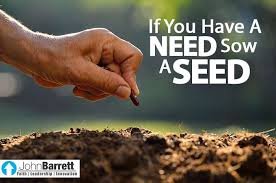.jpg)
source
While it is true that God gives us the opportunity to work the earth in its maximum splendor. There are a number of factors that we must take into account for making the most of our crops.
Among these factors I will mention the following:
The climatic factor: important this first factor , you have to take into consideration this element at the time of planting. Some crops need more water and others less, as does the exponential amount of sunlight. In the case of cassava and pigeon pea is planted at the beginning of winter when the moon is waning according to the tradition of our ancestors.
The biological factor: This is another element to take into consideration, and as I said before it will vary depending on the crop planted. In this factor must be taken into account the organisms that are harmful to crops (insects and weeds). Not all insects are bad, there are some that are beneficial for crops because they help to pollinate and in other cases they serve as protection against harmful organisms. In the case of cassava and quinoa, coquito and bachaco is harmful for this crop, in contrast we have as a beneficial organism the bee since it helps to pollinate the whole plantation.
The economic factor: in some foods the investment is extremely economic and the profitability is extremely good. The commercialization of the harvest is linked with the access roads to it. Prices will be subject to the cost structure, however, you must always have reference to what the market establishes for that moment. The yucca and the quinchoncho have good acceptance in the market so their sale is practically assured.
The technological factor: It is directly related to the type of planting that we will carry out, on a larger scale, a greater quantity of production means we must possess. In our case, the instruments used for the small-scale planting of cassava and pigeon pea were: a tractor, machete, harrow (to prepare the earth) and a furrower, to make the loins and that the crop planted has a slight height . This is done in flood prone terrain.
Returning again to the activity I did together with a family member and some people who work on the farm. I can highlight as an important fact that in total 70 cassava threads and 21 threads of Quinchoncho were planted. In the case of cassava, the plant variety planted is ARMENIA type, for each threads 56 cassava seeds were placed, which gives us a total sum of 3920 plants, it is estimated that the yield per plant is around 3kg, that would give us an estimated 11760kg of cassava. Of course, it is not necessarily the total to harvest because there is always a margin of loss, however it is the estimates and based on those numbers we will be working at the time of harvesting the crop.

(growth after 15 days this is the result of cassava)
In the case of pigeon pea, the planting method was different from that of cassava, since this crop needs more space to develop. In this sense, 3 grains are placed in the soil at a moderate depth for each hole at a distance of 1 meter between. The expected yield at the time of harvest for this item is approximately 1058kg of the 21 threads planted, but as I said in the previous case are mere estimates because there is always a percentage of loss.
For the control of the weed we will use and chemical product whose commercial name is HACHE UNO, this is done with the purpose that it remains free of mount until the plantation has a considerable size and provides enough shade so that weeds do not grow and damage the crop.
In this time of economic and productive uncertainty that Venezuela has, it is important to add efforts, each grain of sand is necessary. It will help us to get out of this crisis!
And finally I'm going to leave you with a small video demonstration of how to furrow the earth mechanically.

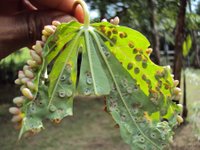

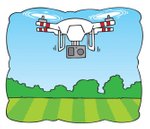
upvote for me please? https://steemit.com/news/@bible.com/2sysip
Congratulations! This post has been upvoted from the communal account, @minnowsupport, by lsanchez920 from the Minnow Support Project. It's a witness project run by aggroed, ausbitbank, teamsteem, theprophet0, someguy123, neoxian, followbtcnews, and netuoso. The goal is to help Steemit grow by supporting Minnows. Please find us at the Peace, Abundance, and Liberty Network (PALnet) Discord Channel. It's a completely public and open space to all members of the Steemit community who voluntarily choose to be there.
If you would like to delegate to the Minnow Support Project you can do so by clicking on the following links: 50SP, 100SP, 250SP, 500SP, 1000SP, 5000SP.
Be sure to leave at least 50SP undelegated on your account.
FELICIDADES!!!!
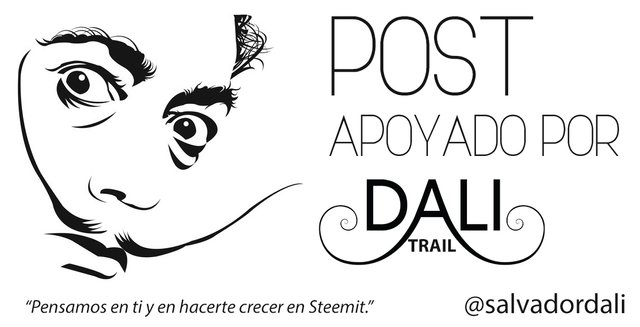
El TRAIL de SalvadorDali te ha apoyado con 0.09